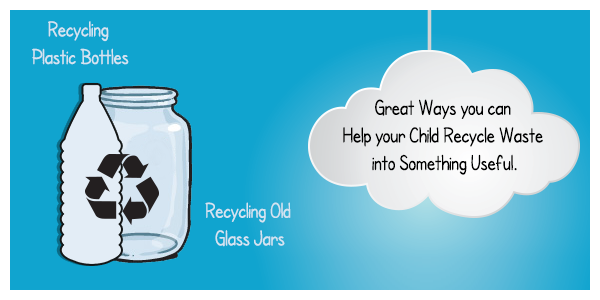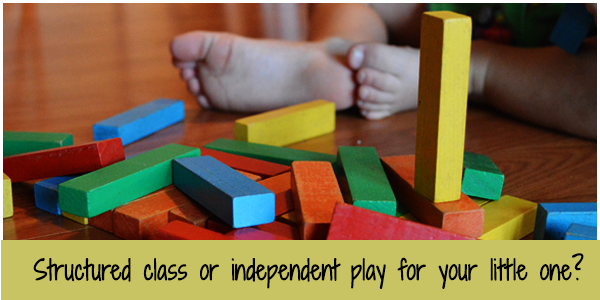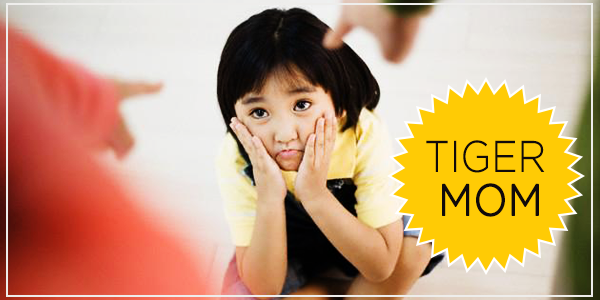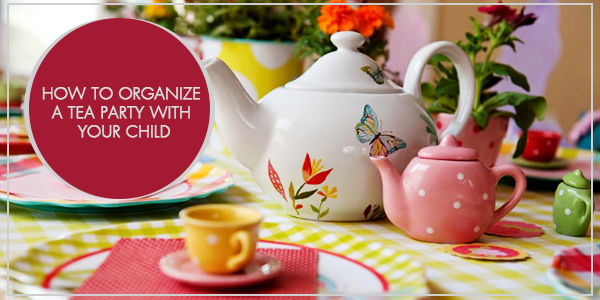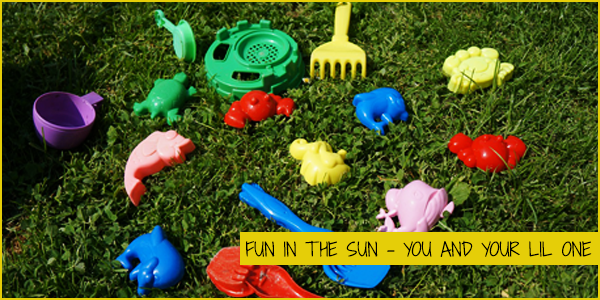These days schools are doing a great job of teaching our children the importance of recycling and going green. Not surprisingly, children are often the policemen at home when it comes to giving their two bits about how mamma should recycle too! [Read more…]
Structured Classes versus Self Directed Play for 3-7 Year Olds
3 to 7 year olds are at an important stage in life where they continue to learn a lot while they play. There also seems to be growing demand for structured classes that focus on one particular skill for your child to master.
Problem solving, skill building, negotiating, overcoming mental and physical barriers are all formed during these years. So should you be setting up structured classes for your children or should you be letting them play on their own? [Read more…]
5 Ways to Show Love to Grandparents
The Indian culture is a very inclusive one. More so, when it comes to our grandparents. Grandparents nurture our lives in the most loving way possible. They don’t have the urgency of getting grandchildren disciplined, they bring in a whole world of traditional values to us and they are simply the most amazing human beings on earth.
And how can we repay them for all that they give us unconditionally? Simple, just follow the steps below religiously and watch how they beam with pride! [Read more…]
Tiger Moms – Indian Style
Amy Chua, the author of controversial book “Battle Hymn of The Tiger Mom” seemed to have opened a whole Pandora’s Box with her controversial account of how she brought up her two daughters in a strict traditional Chinese way of upbringing.
But today’s article is not about Amy’s book. This article is written with the express purpose of evaluating whether Indian mothers are in fact closet Tiger Moms? Or in some cases may be self declared ones!
Grandparent-edge
 What is the role of a grand parent today?
What is the role of a grand parent today?
I have been a grand parent since 2007. Our first grandson arrived that year. Two years later our secondgrand son arrived. Both were born in Mumbai in a hospital close to our home. So I started my role as a grandparent from the day they were born.
Both my wife & I played distinct and different roles as grand parents. She was a big help to my daughter in doing many things for the babies. I played a limited role in the early days. I used to get up early, so did our grandsons. So my daughter would hand over the baby to me. She would get a couple of hours of rest.
Mommy and Me Club – How to Organize a Tea Party with Your Child
Children love to go off into their imaginary world where food plays a great part. My own daughter dresses in fairy costumes every single day after school, gathers up her dolls and asks them to tea around her little table. Surprisingly, when her friends (even boys) come home, they take part in this make-believe tea party with equal gusto.
Camping With Your Children In India This Summer
Summer vacation brings back memories of lazy afternoons spent stuffing ourselves with mangoes, playing in our grandparents backyard, a lot of TV and a book or two. Fast forward to 2015, and summer vacations come so action packed, there’s no time to be lost!
Brimming with a sense of purpose, parents like to send off their kids to eco-friendly summer camps, where they not only learn about team work but also stay close to nature and learn about its delicate balance.
So we decided to put together a list of camping spots in South India for you that are child friendly!
Should Children Use Fountain Pens from the Age of 10?
By Jayaram Rajaram
Over the years, there have been many debates on whether children should use fountain pens or not, when they transition from pencil usage. Many parents have asked me this question and I realized my answers were average at best. So I decided to get my hands dirty and do some research and educate myself and parents who wish to do what’s best for their children.
When I started speaking to parents and teachers I realized that there are distinctly two schools of thought. Some people who are pro-fountain pens claim it helps improve handwriting and others seem to say ball-pens, micro-tips and gel pens work just fine in this day and age of advanced writing technology. Of late some educators and parents have completely discounted the importance of handwriting in the age of technology. Now who is right?
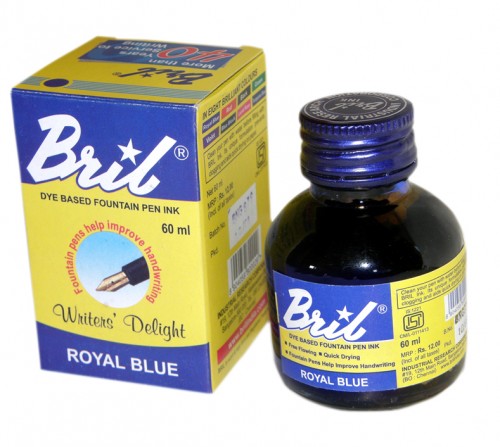 We have been in the fountain pen ink, fountain pen, ball pens, stationery, early-childhood education products and other baby & children’s products space for over 50-years now. More importantly we have been in the business to Make Living Fun for children and parents over the years. We decided that we must research and give our readers and customers authentic information so they take informed decisions that will help in overall development of their children. Over the years, we have been following some research globally, spoken to handwriting experts and have also studied various developmental aspects that are beneficial to children and adolescents.
We have been in the fountain pen ink, fountain pen, ball pens, stationery, early-childhood education products and other baby & children’s products space for over 50-years now. More importantly we have been in the business to Make Living Fun for children and parents over the years. We decided that we must research and give our readers and customers authentic information so they take informed decisions that will help in overall development of their children. Over the years, we have been following some research globally, spoken to handwriting experts and have also studied various developmental aspects that are beneficial to children and adolescents.
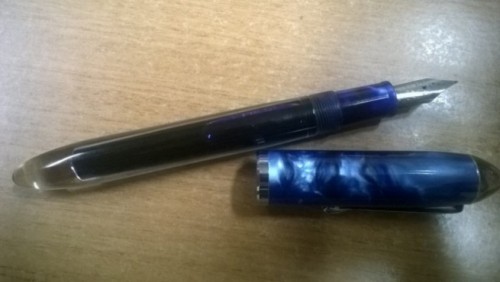 This research has made us come to the conclusion that the use of traditional nib-based fountain pens with high-quality dye based ink is absolutely essential for children transitioning from pencils to pen usage.
This research has made us come to the conclusion that the use of traditional nib-based fountain pens with high-quality dye based ink is absolutely essential for children transitioning from pencils to pen usage.
Following are the reasons why you should definitely start your children off on fountain pens and not ball pens, gel pens or micro tips, from around 10 years of age (Std. / Grade 5) to at least 16 years (Std. Grade 10):
- Traditional fountain pens with high-quality nibs allow children to hold the pen in the correct position. This ensures least pressure on a child’s hand and brings about awareness of grip leading to stability of writing in the long run.
- Holding the pen in one position becomes essential as the flow of ink is optimum (due to abrasion of Nib) in the position used most often by the child. This brings about discipline of grip and makes writing a conscious effort leading to fine motor skills and brain development.
- Good fountain pen ink is less viscous than other inks and offers the best flow under least pressure. Writing for long durations with a fountain pen is much easier than using ball pens and even gel pens.
- Handwriting experts and graphologists advocate the importance of handwriting and its link to overall character and personality of a human-being. While there is no direct evidence that fountain pens improve handwriting, we know for sure that it brings about conscious writing and offers the best stability-flow balance for children to develop one stable way to write over the years. While an improvement in handwriting is subjective, fountain pens by-and-large make the written word look more beautiful if children are trained properly to use them. Did you ever wonder why calligraphy pens have fountain-pen-like Nibs? It’s not a coincidence you know.
- Fine motor skills improve. Today the Montessori method of teaching emphasizes the need to write on sand, use chalk etc. among young kids. Similarly children benefit greatly from the mindfulness that is required while using fountain pens, and also from the slight friction when the nib touches paper if they happen to change their grip (knowingly or unknowingly).
- Learning to write with a fountain pen takes practice and this helps children become more patient, write slower and work on this very important life-skill constantly as they go through school. Patience is a virtue that is quickly disappearing in a world of instant-gratification. Research shows delayed gratification during childhood has a direct correlation with success and happiness in adult life.
- Handwriting that is stable and legible will help children communicate what they learn and know to the world better, with ease and confidence. Simply put legible handwriting helps even smart children score more in exams. Fountain pens definitely make children write with more self-awareness, confidence and take pride in their writing. Self-awareness and enjoying one’s work are by-far the most important aspects of education and long-term success in any field.
- Conscious, mindful writing happens best with a fountain pen and this reduces mistakes and scratching. Laying an emphasis on the process and slowly improving the outcome is more important than ever today, as children grow up with Delete, Backspace, Whatsapps and Snapchats today. We love technology, and children learn a lot from it, but let us not nurture a generation that only believes in things that gratify instantly and mindless, grammatically incorrect modes of communication.
- It’s more Economical and Environment Friendly! While fountain pens for students cost more than the cheap ball point pens and gel pens, they last for years. One bottle of 60 ml ink lasts anywhere between 6 months and one year. So a small investment takes you a long way and saves families a fair bit of money. Moreover fountain pens are not use-and-throw, so children are forced to keep them carefully and indirectly help in saving the environment. A subtle lesson in valuing what they have and also not contributing to more plastic waste by disposing ball point pens and refills maybe?
- It’s Fun! Don’t we all remember swishing and splashing ink on our friends’ shirts using our fountain pens? Anything that aids in playing a fun prank will never go out of fashion with kids! Now if that doesn’t Make Living Fun what will? Worried about the ink-smeared clothes? My friends at surf have a good solution for you 😉
Never forget that handwriting is a person’s unique identity and this needs to be nurtured with care and not treated as frivolously as typing. Even the beautiful fonts in our iPads and computers were created by artists who studied calligraphy (Steve Jobs too was inspired by meditation and a calligraphy course he took). There is no substitute to learning an art form, as art is food for the soul and hence if we are to avoid drastic evolutionary rewiring, introduce your children to fountain pens in their formative years (i.e. when their school asks them to transition from pencil to pen or from 10 years of age if you are home-schooling your child).
While we were at it, we realized that over the last 5-6 years, several schools in Europe have gone back to making fountain pens compulsory. While embracing the latest gadgets is important, let us not do away with timeless know-how and make our children use traditional fountain pens at least for a few years from the year they transition from pencils to pens.
You can now buy Bril Inks Online at www.brilindia.com
About the Author
Jayaram Rajaram is the Managing Partner of Bril and the Managing Director & Chief Dreamer of ELSA. Jayaram writes from his heart and from experience. He writes about varied topics ranging from parenting to leadership and entrepreneurship.
To get updates on Bril, parenting tips and Jayaram’s blog posts become Bril’s fan on www.facebook.com/brilconnect
For more information on Bril and ELSA please visit
Fun in the Sun with Your Little One
Summer holidays are almost upon us. Kids will be home all day. Now what?! How to keep your bubbly little children occupied, so you don’t hear “Mom, I’m bored!” – Words that every mother has dreaded since times unknown.
Read on to find out 6 summer time activities that you can plan with your kids even in the Indian summer. Yes, this list is totally meant for the harsh summers that we face every year.
Your Fussy Eater and His Nutrition; A Unique Way Ahead…
When there’s too much attention on what and how much your child is eating, you are invariably giving “the power of not eating” to your child. While we agree that having a fussy eater on hand is not an easy task by any measure, sometimes all we have to do is take attention away from fuss. Yes! That’s it.
- « Previous Page
- 1
- …
- 28
- 29
- 30
- 31
- 32
- …
- 45
- Next Page »
